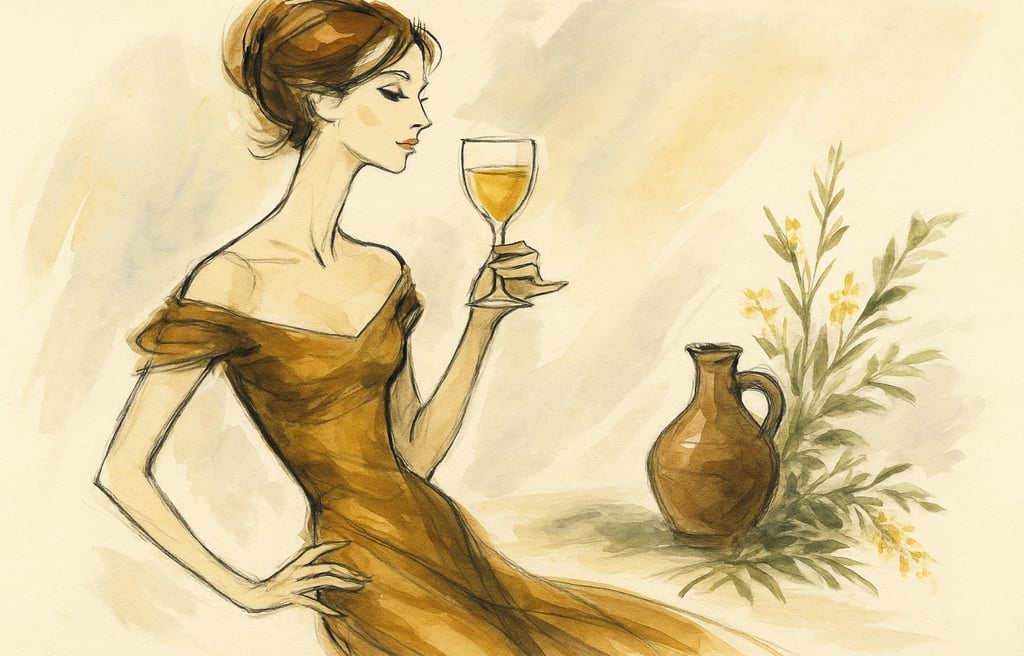Medieval Mead: A Summer of Honey and Herbs
In medieval Europe, mead was more than a drink — brewed with herbs, it sweetened weddings, symbolised fertility, and even sparked romance.
FOOD HISTORY & TRADITIONS


Golden and sweet, with a whisper of herbs and a warming kick — mead was once one of Europe’s most beloved drinks. Long before wine became the hallmark of celebration, mead was the toast of weddings, feasts, and midsummer festivals.
It wasn’t just a beverage. It was summer preserved, honey and herbs turned into something to sip when the days turned cold, a drink with layers of symbolism, magic, and practicality.
Honey, Herbs, and a Simple Brew
At its core, mead is simple: honey, water, and time. But in medieval Europe, it was rarely left plain. Brewers infused their meads with herbs and spices — rosemary for memory, sage for strength, thyme for vitality, and sometimes warming spices like ginger or cloves.
These additions weren’t only for flavour. Herbs acted as natural preservatives and carried medicinal lore. A cup of herb-spiked mead could settle a stomach, soothe nerves, or (people believed) stir desire.
Honey, precious and labour-intensive to harvest, gave the drink a richness no other sweetener could match. Every sip was a taste of summer fields and buzzing hives, preserved through fermentation for the months when flowers were just a memory.
The Drink of Weddings and Fertility
Mead held a special place in wedding celebrations. Its sweetness was a symbol of abundance and happiness, and its honey — often tied to fertility in folklore — was thought to bless couples with a fruitful marriage.
Couples were encouraged to drink mead during the first month of marriage, a tradition that gave us the word “honeymoon.” Mead was believed to have aphrodisiac qualities, its honey and herbs said to awaken desire and ensure the couple’s bond was as enduring as the drink’s golden warmth.
Everyday vs. Celebratory Mead
Not all meads were equal. The everyday versions — light, mildly sweet, brewed with modest amounts of honey — were drunk by common folk as a safer alternative to water, which could be contaminated. These brews were lower in alcohol and more about sustenance than indulgence.
For weddings, festivals, and royal tables, mead was brewed richer and stronger. These versions used lavish quantities of honey and rare herbs, symbolising wealth and celebration. A goblet of strong, spiced mead was a status symbol as much as it was a pleasure.
Fun Fact: Mead’s Medicinal Side
In medieval medicine, mead was considered almost a cure-all when steeped with the right herbs. A rosemary-infused mead was said to sharpen memory, while sage was thought to protect against illness. Spiced meads were sometimes prescribed for winter ailments, acting as a warming tonic for body and spirit alike.
The Taste of Time
Part of mead’s magic is its patience. Unlike ale, which could be brewed and consumed quickly, mead took time to ferment and mature. This made it a seasonal treasure — brewed in summer when honey and herbs were abundant, then stored to sweeten the darker months ahead. Each sip carried a taste of warmth, sun, and life even in the depths of winter.
Today, mead is experiencing a revival, with craft brewers rediscovering the old herbal traditions. But the next time you lift a glass, imagine the medieval tables it once graced — long wooden boards, flickering candles, bowls of herbs, and a jug of golden mead passed hand to hand. A drink that healed, celebrated, and, just maybe, sparked a little romance.
